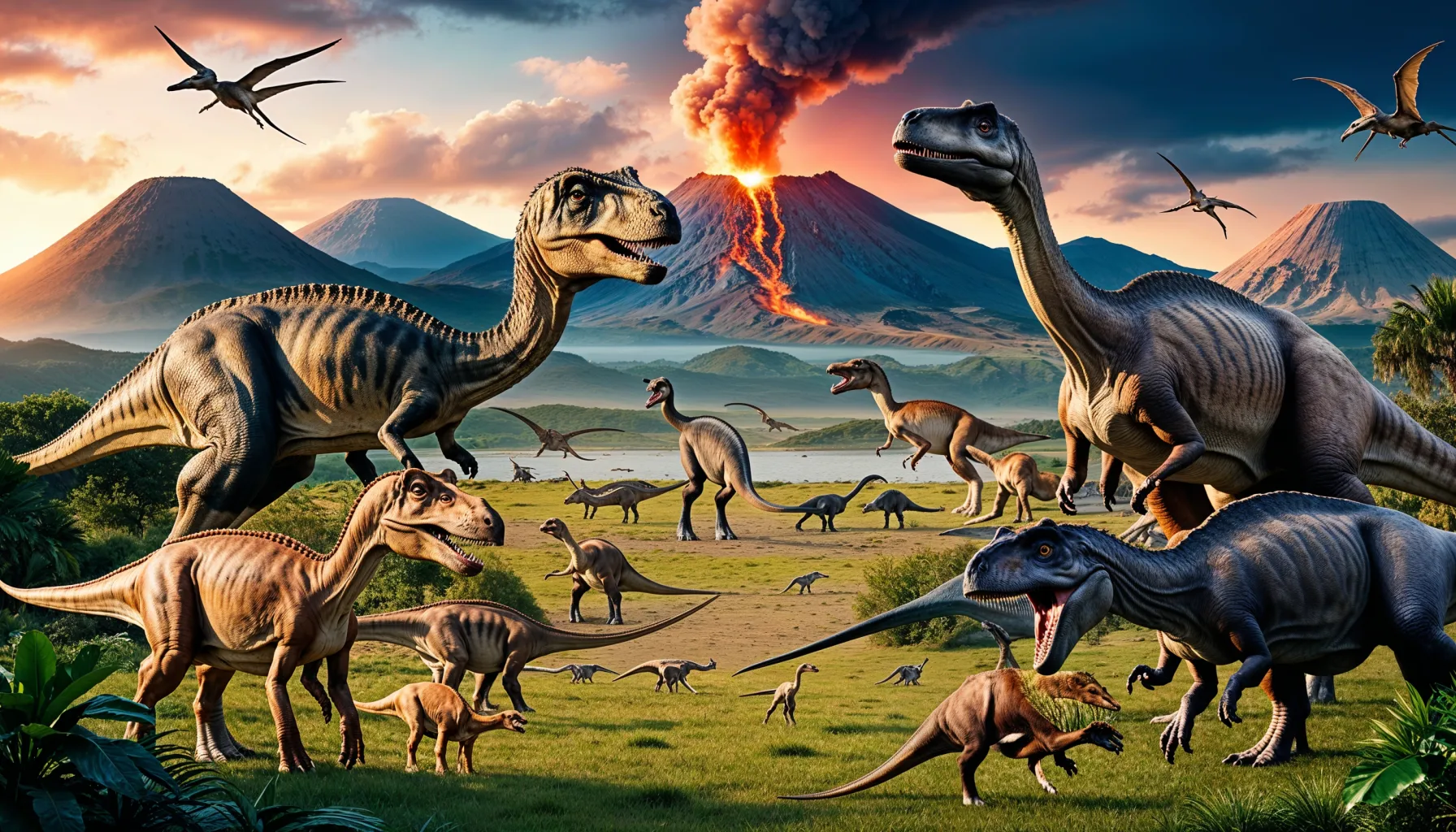Icon of the Cretaceous period: T-Rex and Triceratops
The Cretaceous period was characterized by impressive dinosaurs such as the Tyrannosaurus rex and the Triceratops. The T-rex, known for its massive size and fearsome jaws, dominated as one of the largest predators of its time. The Triceratops, with its distinctive three horns and massive neck shield, symbolizes the diversity and adaptability of herbivores of this era. The interactions between these two species and other dinosaurs illustrate the complex ecosystem of the Cretaceous period, in which predation and defense played central roles.
Diversity of dinosaurs in the Cretaceous period
Dinosaurs reached a peak of diversity in the Cretaceous period. New species evolved in different shapes and sizes, from gigantic sauropods to smaller, agile theropods. This diversity is reflected in the numerous fossil finds worldwide. The Cretaceous period was also a time of innovation, with many dinosaurs developing complex social behaviors, brood care and possibly even feathers. These developments show how adaptable and versatile dinosaurs were in their last era.
Flora and climatic changes
The Cretaceous period was characterized by significant changes in flora and climate. The spread of flowering plants revolutionized the plant world and provided new food sources for the dinosaurs. The climate was warmer than today, with higher sea levels, resulting in extensive shallow seas. These climatic conditions supported a rich and diverse flora and fauna that provided dinosaurs with a variety of habitats and food sources. The changes in the environment had a profound impact on the evolution and behavior of dinosaurs.
Cretaceous-Tertiary boundary and mass extinction
The end of the Cretaceous period was marked by one of the largest mass extinctions in the history of the Earth. The Cretaceous-Tertiary boundary around 66 million years ago marked the sudden demise of many species, including the dinosaurs. Scientific theories attribute this event to catastrophic environmental changes triggered by a massive asteroid impact and/or intense volcanic activity. These global catastrophes had devastating effects on the climate and ecosystems, leading to the rapid extinction of many species.
Scientific theories and discoveries
The Cretaceous period remains a central field of research in palaeontology, which is enriched by continuous discoveries and theories. Modern technologies such as CT scans and 3D modeling provide deeper insights into the anatomy and behavior of dinosaurs. Studies on the Cretaceous-Tertiary boundary provide important insights into mass extinctions and their impact on biodiversity. This research not only contributes to our understanding of the past, but also provides insights into current and future ecological challenges.
